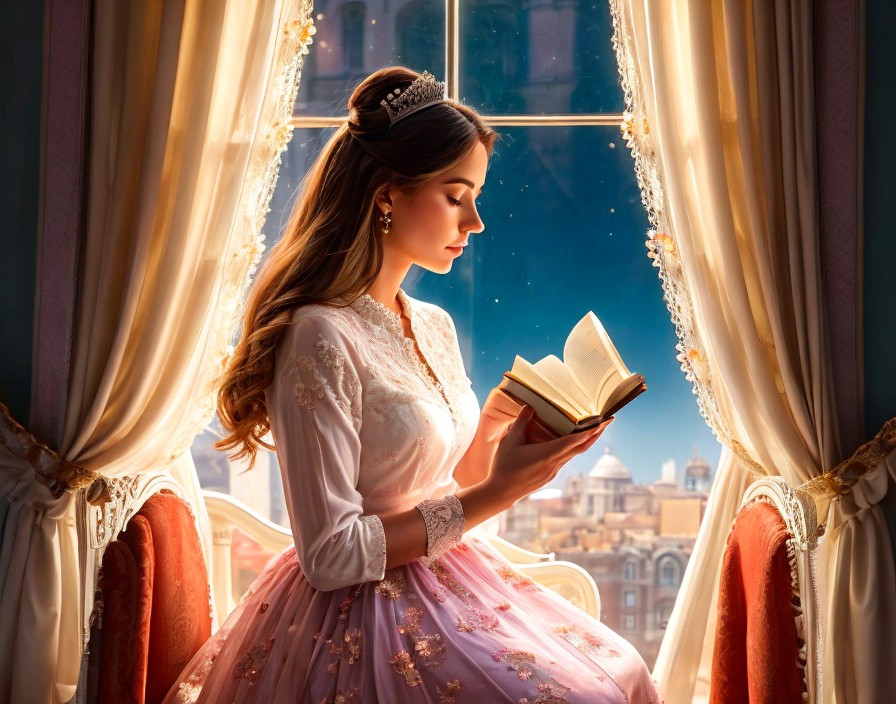
In the realm of literature, logos denotes a persuasive strategy that aims to appeal to the audience’s rationality and logical thinking. By presenting evidence that substantiates their arguments, authors employ logos to effectively persuade readers and convince them of their ideas.
Imagine a story where the author doesn’t just tell you what to think, but instead, lays out a path of reason, like stepping stones across a river. That’s the power of logos in literature. It’s the author’s secret weapon, using logic and evidence to convince you, the reader, of their ideas.
Table of Contents
ToggleLogos in Action: The Detective’s Toolkit
Think of yourself as a literary detective.Logos is your toolkit, filled with:
Fact Files: Dates, statistics, and research findings paint a picture with undeniable truth.
Logical Leaps: Clear connections between ideas build a case so strong, it’s hard to disagree.
Example Exhibits: Real-world scenarios or historical parallels paint vivid pictures, making the argument relatable.
Cause & Effect Charts: Tracing the chain of events from action to consequence shows a clear line of reasoning.

Beyond the Obvious: Logos with a Twist
Logos isn’t always a sledgehammer. Sometimes, it’s a subtle whisper. Authors might use:
Hypothetical Headlines: Imagining the future consequences of an action can make a powerful point.
Reductio ad Absurdum: Showing the ridiculous outcome of an opposing view highlights the flaw in the opponent’s logic.
Formal Debate: Presenting different perspectives logically strengthens the author’s final argument.
So, the next time you delve into a story, don’t just be swept away by the emotions. Look for the whispers of logic, the carefully placed evidence, and the bridges of reason that the author has built that’s the power of logos at work!
Logos, the art of persuasion through logic and reason, has captivated literary minds for centuries.
Here are world-famous critics with interesting perspectives on logos:
Samuel Johnson (18th Century):
A champion of clear and concise writing, Johnson believed logos was about presenting arguments in a way that is “easy to be understood.” (Reference: [Lives of the English Poets, Johnson]) He valued clear language and logical flow above all else.
Roland Barthes (20th Century):
This influential post-structuralist critic viewed logos with a more skeptical eye. He argued that texts often create an illusion of logic, masking underlying power structures and ideologies. (Reference: [Image-Music-Text, Barthes]) For Barthes, logos could be a tool for manipulation as much as persuasion.

Harold Bloom :
Known for his focus on strong interpretations of classic literature, Bloom saw logos as a tool for uncovering the “truth” within a text. (Reference: [A Map of Misreading, Bloom]) He believed that great authors use logos to challenge our assumptions and reveal hidden meanings.
Judith Butler :
A prominent feminist philosopher, Butler emphasizes the limitations of logos. She argues that some experiences, particularly those related to gender and identity, might not be fully captured by traditional logic. (Reference: [Giving an Account of Oneself, Butler]) For Butler, logos needs to be complemented by other modes of persuasion to capture the complexities of human experience.
Edward Said (20th Century):
This postcolonial critic explored how logos can be used to perpetuate power imbalances. He argued that colonizers often used seemingly logical arguments to justify their domination of other cultures. For Said, it’s crucial to examine the context and power dynamics at play when evaluating logos.
M. H. Abrams (Literary Theorist):
Is the appeal to reason, specifically to the audience’s capacity for logical deduction and inductive reasoning.” (Reference: [A Glossary of Literary Terms, Abrams & Harpham, 11th Edition]) Abrams emphasizes logos as a conversation, building bridges between author and reader through clear logical steps.
Northrop Frye (Literary Theorist):
“Logos… operates by the presentation of a series of connected propositions which lead to a conclusion that seems to follow inevitably from them.” (Reference: [Anatomy of Criticism, Frye, Fourth Edition]) Frye highlights the importance of logical flow. Logos, for him, is a chain of reasoning where each link strengthens the overall argument.

Wayne C. Booth (Literary Critic):
“The rhetorical mode of logos… aims at achieving conviction by appealing… to a sense of what is reasonable, fitting, and true.” (Reference: [The Rhetoric of Fiction, Booth, Second Edition]) – Booth goes beyond pure logic, suggesting logos also considers what resonates with the audience’s existing beliefs and sense of truth.
Terry Eagleton (Literary Theorist):
“Logos… is not a neutral instrument but a historically and culturally specific set of assumptions about what counts as rational argument.” (Reference: [Literary Theory: An Introduction, Eagleton, Second Edition]) Eagleton offers a critical perspective, reminding us that even logos is shaped by the context and values of the time period.
Elaine Scarry (Literary Critic):
“Logos… does not merely present arguments, but actively constructs a world within which those arguments can appear reasonable.” (Reference: [On Literal Readings: Poetry, Texts, and the Materiality of Language, Scarry]) Scarry adds another layer: logos isn’t just about logic, it’s about creating a context where the argument makes sense.
These diverse perspectives highlight the richness and complexity of logos in literature. Understanding how different critics have viewed this concept can help you become a more discerning reader, able to identify the power of logic while also recognizing its potential limitations.
These definitions showcase the multifaceted nature of logos. It’s a dance between logic, reason, audience perception, and the very construction of the argument itself. So, the next time you delve into a text, remember, logos is more than just facts and figures it’s a carefully orchestrated symphony of reason aimed at captivating your mind.
The Power of Logic: Understanding Logos in Writing
Have you ever read something so convincing it made perfect sense? That’s the power of logos at work! Logos, a fancy term simply means using logic and reason to persuade someone of your ideas. It’s like building a bridge of understanding with facts and clear thinking.
Think of it this way: Imagine you’re trying to convince your friend pizza is the best food ever. You wouldn’t just yell,”Pizza rules!” Instead, you might say:
(You may laugh at my example, but it is not about laughing, but about understanding)
Pizza contains a variety of food groups including bread, cheese, vegetables, and occasionally protein. (Facts)
It’s customizable, so everyone can find a topping they love! (Logical reasoning)
Remember that amazing pizza party last week? Fun times! (Examples)
Those are all ways of using logos to convince your friend with logic, not just shouting.
Logos in Action:
Logos shows up in all sorts of writing, not just trying to convince someone about pizza!
News articles: Use facts, figures, and quotes from experts.
Schoolwork: Explains concepts with clear steps and examples.
Speeches: Uses logic to build a strong argument.
Remember: Logos is all about using reason and clear thinking to convince someone. It’s like a toolbox full of logic, facts, and examples to help you build strong and convincing arguments!

Why Do Authors Use Logos?
There are several reasons why authors incorporate logos in their writing:
To Persuade Readers: Logos assists in persuading readers of the writer’s viewpoint on a specific matter.
To Enhance Credibility: By using logic and evidence, authors establish themselves as reliable sources.
To Deepen Understanding: Logos clarifies complex ideas and allows readers to follow the author’s thought process.
To Elicit Critical Thinking: Logos encourages readers to analyze the information presented and form their own conclusions.
Logos, the art of persuasion through logic and reason, isn’t just for textbooks. Great authors throughout history have wielded logos like a literary scalpel, dissecting ideas and convincing readers with the power of clear thinking. Here are some shining examples:
The famous authors who have masterfully wielded logos in their works:
Aristotle (Philosopher and Playwright):
known as the “father of logic,” established the foundation for utilizing logos in persuasive writing through his works such as “Poetics” and “Rhetoric.” He stressed the significance of clear reasoning, evidence, and comprehending the audience.
Mary Shelley (Science Fiction):
In “Frankenstein,” Shelley uses logos to explore the ethical implications of scientific progress. By presenting the logical consequences of Victor Frankenstein’s experiments, she sparks a debate about the boundaries of scientific exploration.
Agatha Christie (Mystery):
The “Queen of Crime” relies heavily on logos in her detective novels. Her protagonists, like Hercule Poirot and Miss Marple, use logic and deduction to solve puzzles. Christie masterfully presents clues and red herrings, forcing the reader to follow the detective’s reasoning to arrive at the solution.
Frederick Douglass (Autobiography):
In his autobiography, “Narrative of the Life of Frederick Douglass, an American Slave,” Douglass uses logos to expose the brutality and illogic of slavery. By providing detailed descriptions and presenting factual evidence, he deconstructs the justifications for slavery, appealing to the reader’s logic and moral compass.

Al. Gore (Non-Fiction):
In his book “An Inconvenient Truth,” Al Gore effectively addresses the issue of climate change by constructing a coherent and rational argument. Through the utilization of data, scientific evidence, and tangible real-world illustrations, he successfully persuades readers of the pressing need to confront this matter. Gore’s use of logos aims to inspire action through rational understanding of the problem.
Harper Lee: The Logical Simplicity of “To Kill a Mockingbird”
Harper Lee delves into the challenging subject of racial prejudice in her acclaimed novel, “To Kill a Mockingbird.” Lee’s ingenuity shines through in her application of logical reasoning. Scout Finch, the innocent narrator, exposes the absurdity of racism through her childlike logic. Witnessing the trial of Tom Robinson, a black man falsely accused, Scout asks, “Why can’t Atticus [her lawyer father] defend us like that?” This simple question exposes the injustice of a system that denies fair representation based on race.
George Orwell: Constructing a Dystopian Nightmare in “1984”
George Orwell’s dystopian novel “1984” depicts a society governed by complete authority and distorted reasoning. The authoritarian regime, known as Big Brother, alters historical records and distorts language in order to dominate the minds of its citizens. Orwell uses logos brilliantly by highlighting the dangers of unchecked logic. He urges readers to appreciate reason and independent thinking by highlighting the alarming outcomes of a society fixated on control.
Jonathan Swift: Satirical Logic in “Gulliver’s Travels”
Jonathan Swift, master of satire, uses logos in a playful yet pointed way in “Gulliver’s Travels.”Swift uses Gulliver’s interactions with imaginative civilizations to mock human foolishness. For instance, in Lilliput, the miniature inhabitants engage in a war over the positioning of a boiled egg, underscoring the ridiculousness of political disputes. Similarly, the giant Brobdingnag mocks human pride by portraying humans as insignificant creatures. Swift’s satirical reasoning reveals the imperfections in human conduct, encouraging us to reflect critically on our own communities.
Mark Twain: Satirical Wit in “Huckleberry Finn”
Mark Twain’s “Huckleberry Finn” uses logos through the lens of social satire. Huck Finn, the youthful main character, maneuvers through a community filled with hypocrisy, especially in terms of race. Twain reveals the irrationality of racism through Huck’s pure observations. When Huck chooses to protect the runaway slave Jim, he defies the prevailing social norms, showcasing the power of individual reason over blind prejudice.
Naomi Klein: Unveiling the Logic of Consumerism in “No Logo”
Naomi Klein’s non-fiction book, “No Logo,” tackles a different kind of logic – the logic of consumerism. Klein uses logos by presenting facts and statistics on corporate branding and its influence on society. She exposes the illogicality of consumer culture, where happiness is equated with buying products. By using clear reasoning and evidence, Klein encourages readers to think critically about their consumption patterns.

These are just a few examples. From classic literature to contemporary non-fiction, logos continues to be a powerful tool for authors to engage readers, challenge assumptions, and inspire critical thinking. You pick up a book, keep an eye out for the whispers of logic. You might be surprised by the ways authors use reason to shape your understanding of the world.
These diverse examples showcase how logos can be a powerful tool across genres. From philosophers laying the foundation to mystery writers crafting logical puzzles, authors have used logos to challenge, educate, and inspire readers through the power of reason.
While logos is less commonly used in poetry compared to prose, some legendary poets have indeed incorporated it in their work in subtle yet powerful ways.
Here are a few examples:
William Blake (1757-1827):
Known for his visionary and symbolic poems, Blake used a form of logos that appealed more to intuition and reason through imagery. In “London,” he paints a vivid picture of poverty and oppression, urging readers to question the social order using a combination of emotional appeal (pathos) and logical reasoning based on the presented imagery.
John Donne (1572-1631):
Donne, an adept metaphysical poet, examined intricate concepts through the use of logic and argumentation. Poems like “A Valediction: Forbidding Mourning” employ rational thinking to provide solace to a lover dealing with separation. He contends that their love transcends physical distance, fostering a sense of security through intellectual connection.
Alexander Pope (1688-1744):
The master of satire, Pope used logos to expose societal flaws through wit and reason. In “An Essay on Man,” he uses logical arguments to explore the nature of humanity and its place in the universe. Even though the poem raises complex philosophical questions, Pope presents his ideas in a clear and well-reasoned manner.
Maya Angelou (1928-2014):
A powerful voice in African American literature, Angelou used logos to amplify messages of justice and equality. Poems like “Still I Rise” use historical references and logical arguments to counter racism and oppression. By highlighting the achievements of African Americans, she uses facts and reason to inspire hope and resilience.
W. H. Auden (1907-1973):
A prominent 20th-century poet, Auden often grappled with political and social issues. In poems like “September 1, 1939,” he uses a combination of historical context and logical reasoning to condemn the outbreak of World War II. By presenting the consequences of war, he appeals to the reader’s intellect and sense of morality.
It’s important to remember that logos in poetry often takes a more nuanced approach compared to prose. Poets might use metaphors, allegories, or historical references to present their arguments indirectly, appealing to the reader’s reason alongside other literary devices.
Naomi Shihab Nye :
Known for her accessible and thought-provoking poems, Nye often uses logos to explore themes of identity, belonging, and cultural understanding.
Within “Famous,” the author employs a sequence of inquiries regarding the factors that contribute to fame in order to question conventional notions of achievement and promote self-reflection.
Billy Collins :
This playful and humorous poet utilizes logos in unexpected ways. Poems like “Introduction to Poetry” employ wit and reason to make poetry more approachable for new readers. He breaks down the elements of poetry in a logical and relatable way, demystifying the art form.
A. E. Housman (Early 20th Century): Though not strictly “modern,” Housman’s poems like “On a Shropshire Lad” use a unique blend of logos and pathos. He presents a logical view of mortality and the impermanence of life, but also evokes a sense of melancholy and acceptance through his imagery and language.
Louise Glück :
A Nobel Prize winner, Glück’s poems often delve into complex emotional states with a strong undercurrent of logic. Works like “The Wild Iris” use imagery and metaphors to explore themes of nature, survival, and the human condition. The clear and deliberate language guides the reader through her explorations.
Warsan Shire :
A powerful voice in contemporary poetry, Shire uses logos to address social issues and empower marginalized voices. Poems like “Home” use factual accounts of displacement and war to challenge perspectives on immigration and identity. Through logic and clear language, she presents a compelling case for understanding and empathy.
These are just a few examples, and the way logos manifests in poetry is constantly evolving. As society grapples with new issues, poets will continue to find innovative ways to use reason and logic alongside other literary devices to challenge, inspire, and make sense of the world around them.

Conclusion
So, the Plot Twist of Logos?
Ever finished a book feeling like the author built a whole world of ideas, brick by logical brick? That’s the power of logos at work! It’s not about yelling the loudest, but about using reason and clear thinking to convince you, the reader.
Think of it like a detective story the author lays out clues (facts, examples), connects the dots with clear reasoning, You see the bigger picture, understanding their point.
Logos isn’t just for textbooks; famous authors like Harper Lee and George Orwell used it masterfully to challenge ideas and spark critical thinking. Even poets weave logical arguments in with their beautiful words.
The next time you pick up a book, don’t just get swept away by the story. Look for the whispers of reason, the carefully placed evidence that’s logos guiding you on a journey of understanding through the power of clear thinking!

Fantastic beat I would like to apprentice while you amend your web site how could i subscribe for a blog site The account helped me a acceptable deal I had been a little bit acquainted of this your broadcast offered bright clear concept
I do not even know how I ended up here but I thought this post was great I do not know who you are but certainly youre going to a famous blogger if you are not already Cheers
My admiration for your creations is as substantial as your own sentiment. The visual presentation is tasteful, and the written content is sophisticated. Yet, you seem uneasy about the possibility of presenting something that may cause unease. I’m confident you’ll be able to resolve this issue efficiently.
I was suggested this web site by my cousin Im not sure whether this post is written by him as no one else know such detailed about my trouble You are incredible Thanks
helloI really like your writing so a lot share we keep up a correspondence extra approximately your post on AOL I need an expert in this house to unravel my problem May be that is you Taking a look ahead to see you
I loved as much as youll receive carried out right here The sketch is tasteful your authored material stylish nonetheless you command get bought an nervousness over that you wish be delivering the following unwell unquestionably come more formerly again since exactly the same nearly a lot often inside case you shield this hike
I just wanted to express my gratitude for the valuable insights you provide through your blog. Your expertise shines through in every word, and I’m grateful for the opportunity to learn from you.
you are truly a just right webmaster The site loading speed is incredible It kind of feels that youre doing any distinctive trick In addition The contents are masterwork you have done a great activity in this matter
Businessiraq.com is your gateway to accessing the full potential of the Iraqi market. This comprehensive Iraq business directory provides extensive online business listings, enabling efficient networking and informed market entry. Discover the latest Iraq business news, explore diverse Iraq jobs, and leverage the tender directory to secure procurement contracts. With Businessiraq.com, you are fully connected to the Iraqi business landscape, facilitating growth and success.
Job Opportunities and Tender Listings Businessiraq.com goes beyond just a business directory by offering a specialized Job and Tender Directory that connects local talent with potential employers. This platform allows businesses to post job vacancies and tender opportunities while helping job seekers discover career prospects tailored to their skills. By incorporating keywords related to job openings and tenders in Iraq, Businessiraq.com enhances its visibility in search engine results, making it easier for users to find valuable employment opportunities. Whether you’re looking for your next job or seeking to fill crucial positions in your company, Businessiraq.com provides a comprehensive solution.
Hello i think that i saw you visited my weblog so i came to Return the favore Im trying to find things to improve my web siteI suppose its ok to use some of your ideas
Wohh just what I was searching for, appreciate it for putting up.
Pretty! This was a really wonderful post. Thank you for your provided information.
I have been browsing online more than three hours today yet I never found any interesting article like yours It is pretty worth enough for me In my view if all website owners and bloggers made good content as you did the internet will be a lot more useful than ever before
Thanks I have just been looking for information about this subject for a long time and yours is the best Ive discovered till now However what in regards to the bottom line Are you certain in regards to the supply
There is noticeably a bundle to know about this. I assume you made sure nice points in options also.
I have read a few good stuff here. Certainly price bookmarking for revisiting. I wonder how so much attempt you put to make any such wonderful informative website.
I’m impressed, I have to say. Really hardly ever do I encounter a blog that’s both educative and entertaining, and let me tell you, you might have hit the nail on the head. Your concept is excellent; the difficulty is one thing that not sufficient individuals are speaking intelligently about. I’m very completely happy that I stumbled across this in my seek for one thing referring to this.
Hello, you used to write great, but the last several posts have been kinda boringK I miss your great writings. Past few posts are just a little bit out of track! come on!
Hey! I know this is kind of off topic but I was wondering which blog platform are you using for this website? I’m getting tired of WordPress because I’ve had problems with hackers and I’m looking at alternatives for another platform. I would be great if you could point me in the direction of a good platform.
Thankyou for helping out, superb info .
Excellent weblog right here! Additionally your website loads up very fast! What web host are you using? Can I am getting your associate hyperlink for your host? I want my website loaded up as quickly as yours lol
Hello, you used to write fantastic, but the last few posts have been kinda boring… I miss your great writings. Past few posts are just a little bit out of track! come on!
Impressive write-up
It’s hard to find knowledgeable people on this topic, but you sound like you know what you’re talking about! Thanks
Along with every little thing which seems to be building within this specific subject material, all your perspectives are generally relatively exciting. Having said that, I beg your pardon, because I do not give credence to your entire idea, all be it stimulating none the less. It appears to me that your remarks are not totally validated and in actuality you are yourself not really totally confident of your argument. In any event I did take pleasure in reading it.
Nicely articulated
Wow that was odd. I just wrote an extremely long comment but after I clicked submit my comment didn’t appear. Grrrr… well I’m not writing all that over again. Anyhow, just wanted to say fantastic blog!
hello there and thanks to your information – I have certainly picked up something new from proper here. I did alternatively experience some technical points the use of this site, since I skilled to reload the website a lot of times prior to I could get it to load correctly. I had been thinking about if your hosting is OK? Not that I’m complaining, but sluggish loading circumstances occasions will sometimes impact your placement in google and can harm your high-quality ranking if advertising and ***********|advertising|advertising|advertising and *********** with Adwords. Anyway I am including this RSS to my e-mail and can look out for much extra of your respective interesting content. Make sure you replace this again very soon..
I’ve been surfing online more than 3 hours nowadays, but I never discovered any fascinating article like yours. It’s beautiful worth sufficient for me. Personally, if all web owners and bloggers made excellent content material as you probably did, the web might be a lot more useful than ever before.